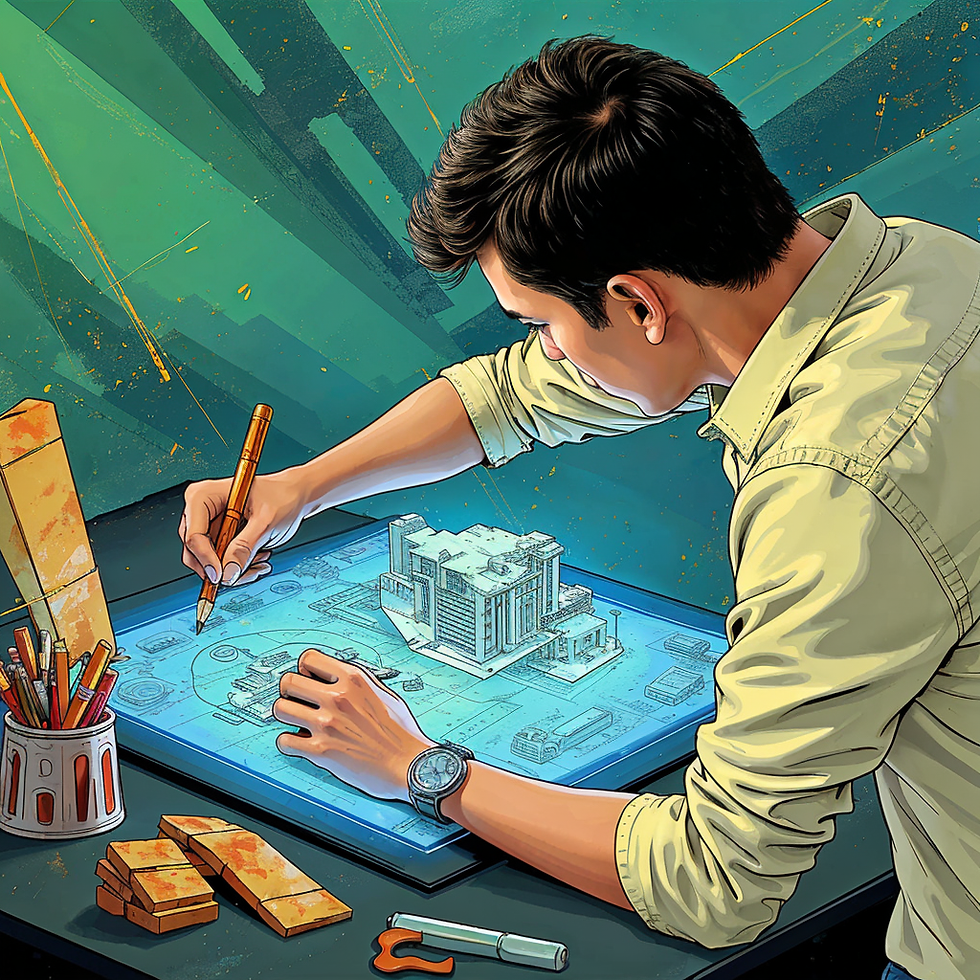What is Visual-Spatial Reasoning?
- Sophia Whitehouse
- Dec 5, 2024
- 3 min read
Visual-spatial reasoning is the cognitive ability to process, analyze, and manipulate visual and spatial information. It’s what allows you to read maps, visualize objects in three dimensions, and understand spatial relationships. This skill is essential for creativity, problem-solving, and navigating the physical world. In this blog, we’ll explore visual-spatial reasoning, its benefits, how it shapes relationships and careers, and even the kind of pet that suits people with this strength.
What is Visual-Spatial Reasoning?
Visual-spatial reasoning refers to the ability to mentally manipulate objects, recognize spatial patterns, and navigate environments. This skill is critical for tasks that require an understanding of shapes, dimensions, and spatial orientation.
Key Traits of Visual-Spatial Reasoning:
3D Visualization: Imagining how objects appear from different angles.
Pattern Recognition: Identifying visual relationships and structures.
Navigation Skills: Easily finding directions and understanding layouts.
Creative Problem-Solving: Using visualization to solve complex challenges.
Strengths of Individuals with High Visual-Spatial Reasoning
Those with strong visual-spatial reasoning excel in areas requiring creativity and spatial awareness.
Everyday Strengths:
Hands-On Problem-Solving: Fixing or building things with ease.
Spatial Organization: Arranging spaces for functionality and aesthetics.
Design and Art: Creating visually appealing and functional designs.
Navigation Mastery: Understanding maps and directions effortlessly.
Career Paths for Individuals with Strong Visual-Spatial Reasoning
Visual-spatial reasoning is highly valued in fields where creativity and spatial manipulation are key.
Top Career Options:
Architecture: Designing buildings with both form and function.
Interior Design: Creating visually stunning and functional spaces.
Engineering: Solving spatial problems in construction and mechanics.
Art and Sculpture: Crafting intricate and visually engaging pieces.
Piloting and Navigation: Mastering flight paths and spatial logistics.
Leadership Style of Visual-Spatial Reasoning Experts
Leaders with strong visual-spatial reasoning bring creativity and innovative solutions to their teams.
Hallmarks of Their Leadership:
Visionary Thinking: Offering fresh perspectives and groundbreaking ideas.
Attention to Detail: Ensuring projects are both functional and visually appealing.
Hands-On Approach: Actively participating in problem-solving and implementation.
Potential Pitfall: They may focus heavily on visual aspects, sometimes overlooking other critical details.
Strengths and Weaknesses in Relationships
Visual-spatial reasoning can influence how individuals approach their relationships.
Strengths:
Thoughtful Gestures: Creating meaningful and visually impactful gifts or experiences.
Problem-Solving: Using creative solutions to resolve conflicts.
Attention to Environment: Crafting beautiful, cozy spaces for loved ones.
Weaknesses:
Over-Focus on Aesthetics: Prioritizing appearance over practicality in some situations.
Difficulty Verbalizing Emotions: Relying more on visual expressions than words.
Strengths and Challenges in Friendships
Friends with strong visual-spatial reasoning are often admired for their creative and resourceful nature.
In Friendships:
Strengths: They’re the go-to for organizing events, decorating spaces, or fixing visual problems.
Challenges: They might struggle to connect in conversations that lack visual or tangible context.
Parenting Skills of Visual-Spatial Reasoning Stars
Parents with strong visual-spatial reasoning excel in teaching their children creativity and spatial awareness.
Parenting Strengths:
Hands-On Learning: Engaging children with puzzles, crafts, and interactive activities.
Creative Problem-Solving: Helping kids think outside the box.
Parenting Challenges:
Impatience with Abstract Issues: Struggling with problems that lack tangible or visual solutions.
Common Bad Habits
Even those with excellent visual-spatial reasoning may develop certain habits:
Over-Perfectionism: Focusing excessively on aesthetics or alignment.
Disorganization in Non-Visual Tasks: Neglecting areas that aren’t visually obvious.
Overloading Visual Designs: Adding too many elements in creative projects.
The Best Pet for Strong Visual-Spatial Reasoning
For someone with strong visual-spatial reasoning, the perfect pet is a Chameleon! Their fascinating ability to change colors and blend into surroundings appeals to visual thinkers who enjoy intricate details and patterns.
How to Leverage Visual-Spatial Reasoning
Here’s how to make the most of this incredible skill:
Engage in Creative Activities: Try sculpting, painting, or designing spaces.
Use Spatial Tools: Practice with 3D modeling software or navigation apps.
Collaborate: Team up with individuals who excel in verbal or logical reasoning for balanced problem-solving.
Discover the full scope of your cognitive abilities with a comprehensive cognitive evaluation. Gain insights into your visual-spatial reasoning and other strengths to unlock your potential! Call or text 614-470-4466, email admin@achievepsychology.org, or visit www.achievepsychology.org to schedule your evaluation today!


Comentarios